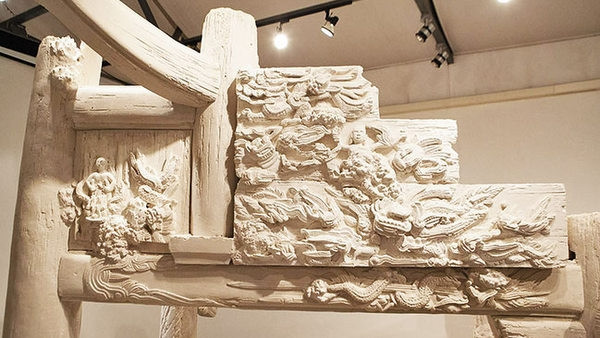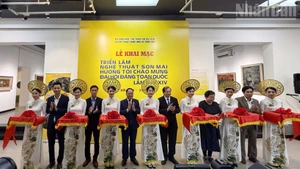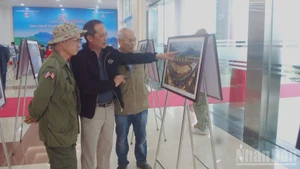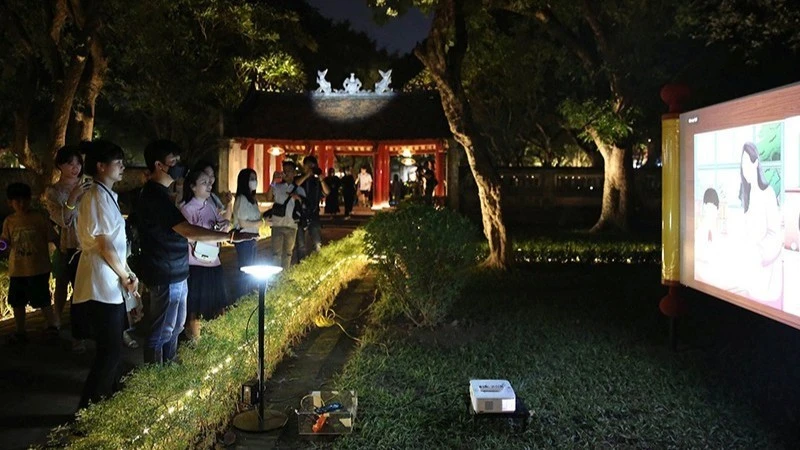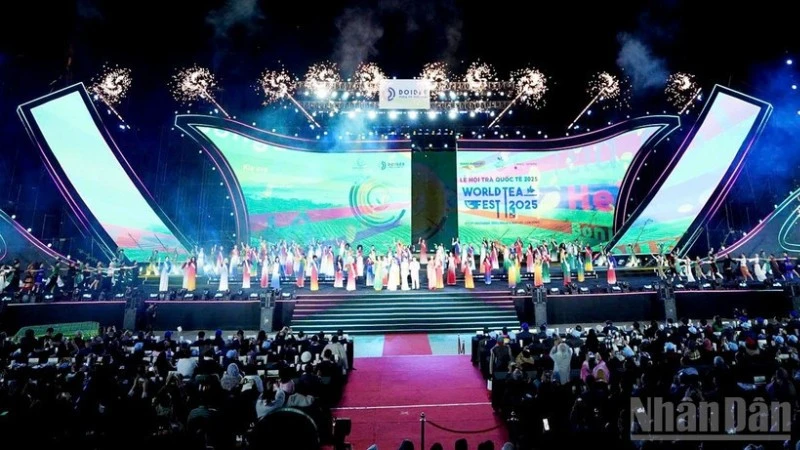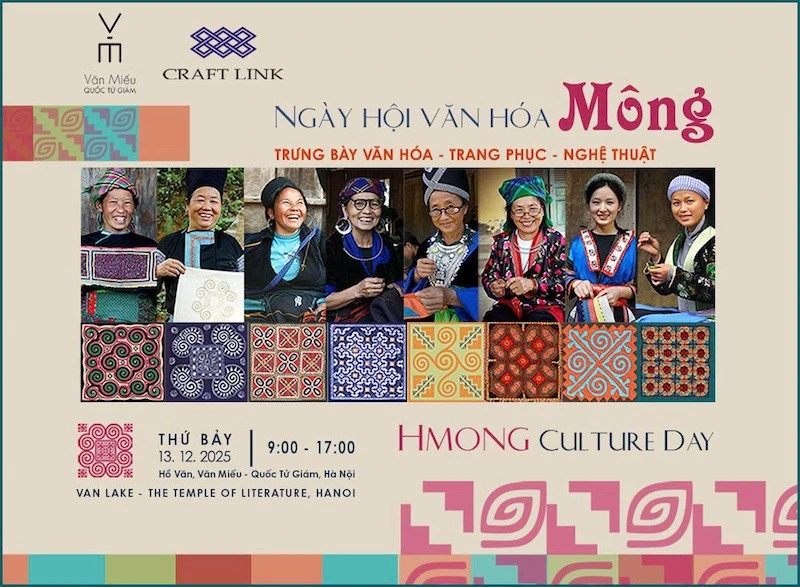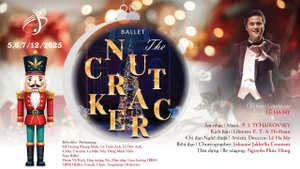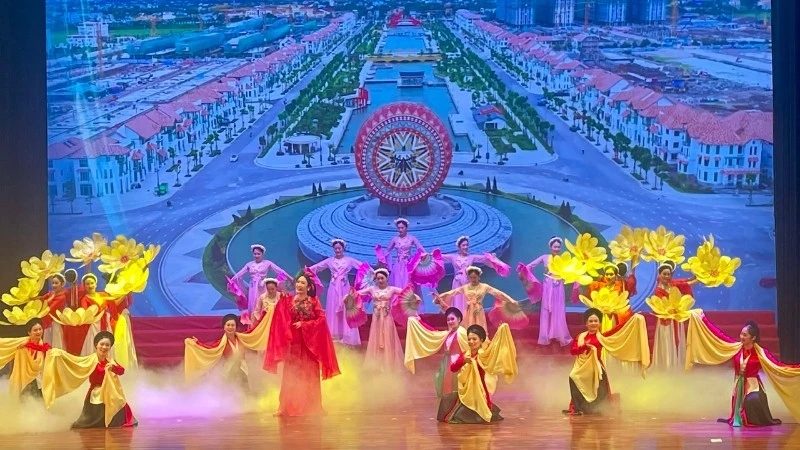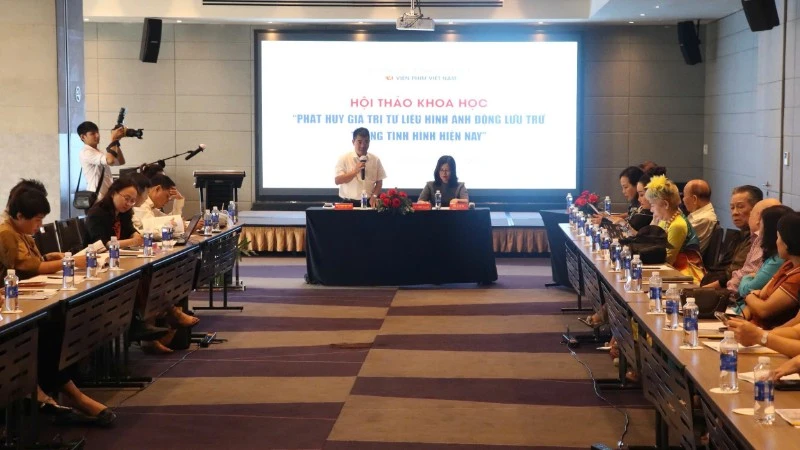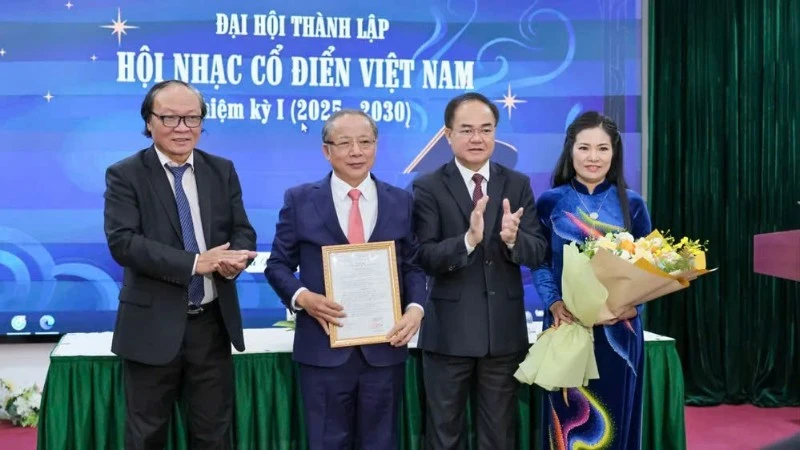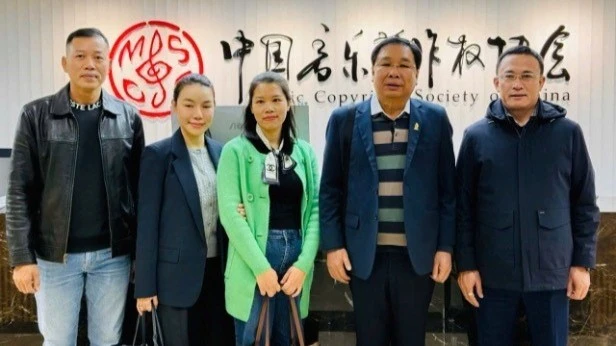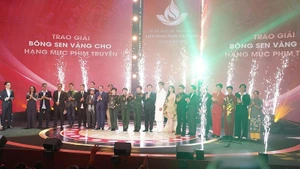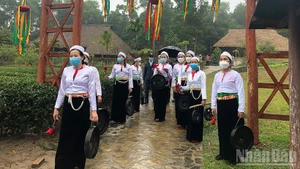The exhibition is the result of six months of joint cooperation between the artist Le Giang, Sino-Nom researcher Nguyen Dinh Hung, vernacular architect Pham Thanh Thuy and environmental consultant Nguyen Thuy Duong.
It is part of the project ‘Shaping the future - A cultural perspective’, which was founded and supported by the Goethe Institute in Hanoi.
The interesting experiments of Le Giang, a young artist, brought a surprise to listeners. The painting on four flowing cycles of the Red River seems to be overlooked because of the strong impression by the sculpture installation ‘Communal house’. However, through carefully contemplating the painting, visitors became curious about its paper material. Artist Giang said that the material and colours were unique features of the picture.
During her field trips, she found that the people in the central provinces often used a special kind of paper to wipe the fishes’ blood. It is white in colour, very thin, tough and absorbent. Local people said that they made this kind of paper to use themselves rather than for sale. Giang bought the papers to use in her painting, which has brought interesting effects. The exhibited painting was created on this paper material with four layers. She mixed the Red River alluvial deposits with glue to make the colour.
Artist Le Giang graduated from the Vietnam University of Fine Arts and then studied at the College of Arts, in the UK. However, she admitted that she was heavily attached to traditional culture. She returned home in 2012 but still participated in many projects, exhibitions and art activities in the UK, Japan, Singapore and the Philippines with diverse modes of practice, such as coal and gypsum.
Earlier, Giang joined numerous small projects on ancient parallel sentences and door painting in fresco; so she gained a deep understanding of rural life and folk culture. Last year, she took part in a project on the traditional trade villages. After her field trips, she concerned herself with the relations between artisans and artists as well as between existing heritages and those that are gradually being lost into oblivion due to urbanisation.
She shared: “Visiting northern rural areas, I was very surprised by the ancient architecture of the temples and pagodas with delicate engraved patterns. People in Giang’s hometown in Duc Noi village, Dong Anh district, Hanoi, donated money to rebuild the damaged communal house. Giang was entrusted with the task of managing artistic issues. Deeply learning about communal houses, she was attracted by not only their visual beauty but also their significance in the people’s lives. Communal houses contain the ancestors’ thoughts and conception on the earth and heaven as well as wishes for favourable weather and abundant crops.
The exhibition is part of activities to celebrate the 20th founding anniversary of the Goethe Institute in Vietnam. With knowledge accumulated from the building of the communal house in her hometown, Giang created a gypsum sculpture installation which is being displayed at the exhibition. She asked the foreman who joined the building of Duc Noi communal house to give consultations about the proportion, size and structure of her artwork.
The exhibition also features a woodblock printing matrix on ‘the national vestige’, a work jointly created by artist Le Giang and Sino-Nom researcher Nguyen Dinh Hung. He translated the words engraved on the matrix that the communal house is the most sacred position in a village to worship the village’s gods. It is also a place for villagers to hold important meetings. Every year, after paying tribute to gods and praying for happiness and prosperity, they have feasts here which show that the gods are seated in a sacred place, and the people’s mind can be peaceful.
The communal house as well as other village’s cultural heritages have been degraded and destroyed by not only natural factors, such as time and natural calamities, but also changes caused by modern life. The habits of living at the communal houses have been changed and lost into oblivion. Many communal houses cannot be restored; while many others have only vestiges, without an incense-table or parallel sentences, so their architecture has been deformed. Witnessing the status of cultural heritages, artist Le Giang and her partners always felt anxious about the vestiges of the communal houses.
Researcher Nguyen Dinh Hung shared that during the field trips, he saw gates, pillars, bricks, plates, ceramics and ancient coins of sagged and moved works. The information and images recalling the memories of the spiritual houses of the community have become the vestiges. Young people in modern life should learn more about the history and ancient culture for their creation.

Artist Le Giang at her trip to Tien Le village, Hoai Duc district, Hanoi
| The project ‘Shaping the Future – A cultural perspective’ is a topic which allows a wide range of responses. It invites us to think about the relation between our species and nature, or the effects of digitalisation, or the relation between future and presence, or the notion of learning and preparedness for the future etc. All of the applicants have their own thoughts about what they want to make the public in Vietnam aware of through the medium of the arts. |
